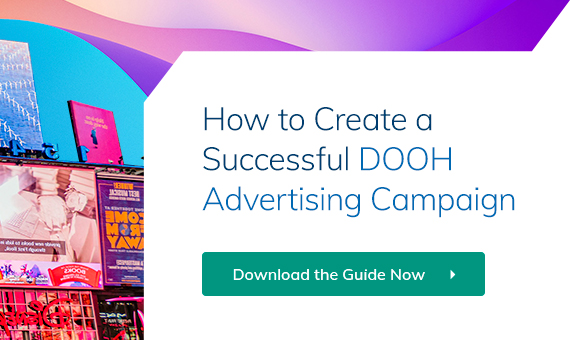In today’s hyperconnected world, it’s never been more important for brands to stand out and make a lasting impression during key touchpoints of the customer’s journey. This means creating relevancy for consumers.
In the online world, marketers and advertisers do this by utilizing behavioral targeting techniques to serve relevant ads to internet users. Every time a consumer clicks on a link, views a video, or visits a product page, ads related to this user behavior will follow them wherever they go across the web.
However, behavioral advertising isn’t the only way to target consumers with relevant ads – and in fact, it’s not necessarily the most effective. Many advertisers today consider an alternative method, known as contextual advertising, to be the best way to serve relevant ads to relevant audiences – and contextual advertising is by no means confined to the online world. In fact, in the offline space, DOOH provides a multitude of ways to reach and engage specific audiences according to parameters controlled by the advertiser, making it a powerful contextual advertising channel.
What Is Contextual Advertising?
Contextual advertising refers to the practice of creating advertisements that are contextually relevant to the places where those advertisements are displayed. In the digital realm, advertisers will serve contextual ads on relevant web pages – for example, ads for smartphones on tech sites, or ads for reading glasses on online book shops. This is usually achieved through keyword targeting via ad networks, such as the Google Display Network.
Today, however, advertisers are increasingly turning to contextual advertising when running ads in the offline world.
Digital Out of Home advertising (DOOH) has numerous inherent advantages for advertisers – broad reach, high visual impact, and the ability to incorporate hyperlocal context into creative messages, all of which make it an exceptionally strong medium for contextual targeting and brand building.
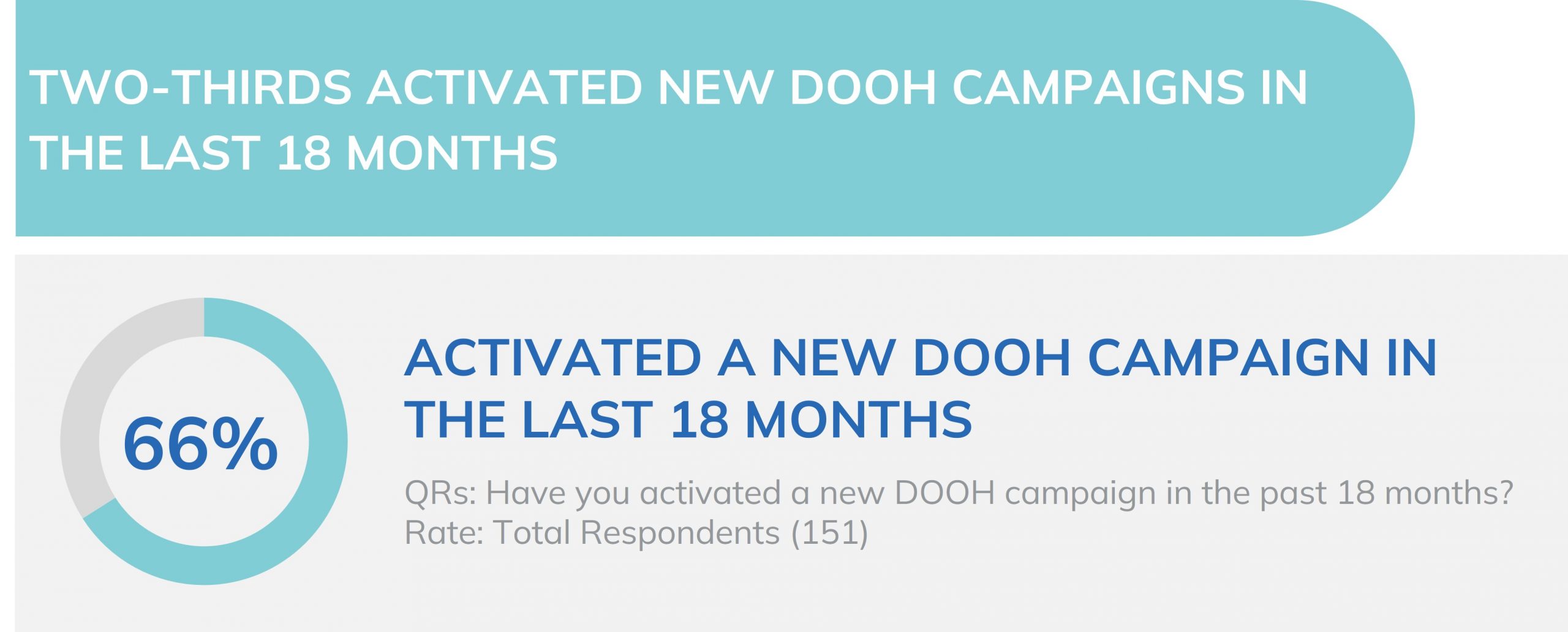
(Image source: dpaglobal.com)
Two-thirds of advertisers have activated a new DOOH campaign in the last 18 months, according to a recent survey by DPAA Global Digital Out of Home. When asked what aspects of digital Out of Home have worked best for them, the two most common answers pointed to contextual targeting and flexibility.
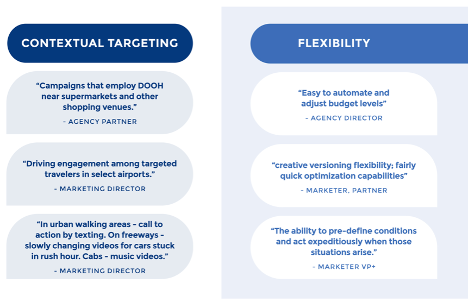
(Image source: dpaglobal.com)
Why Contextual Advertising Works So Well for DOOH?
Localization is key for DOOH contextual advertisements. Indeed, smart brands know how to make great use of the situational context of a digital Out of Home screen as part of the creative.
Burger King, for example, has long run ads telling consumers how close they are to the nearest branch. Consumers appreciate this approach – research has revealed that 77% want to see ads that are relevant to their location.
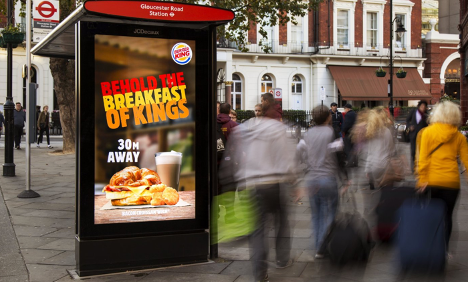
(Image source: movie.media)
However, it’s not just what consumers say they want from DOOH ads that makes contextual advertising so effective.
Research from Clear Channel, JCDecaux, and Posterscope into the power of relevancy in DOOH has revealed that consumers are at their most receptive to brand messaging when it is delivered in contextually relevant situations – and that translates into real-world sales uplifts.
The Moment of Truth study was a combination of three different research techniques – neuroscience, ad recall, and sales effect. These techniques collectively sought to provide both an academic understanding of contextually relevant messaging in DOOH and how these academic insights present as real-world actions in consumers.
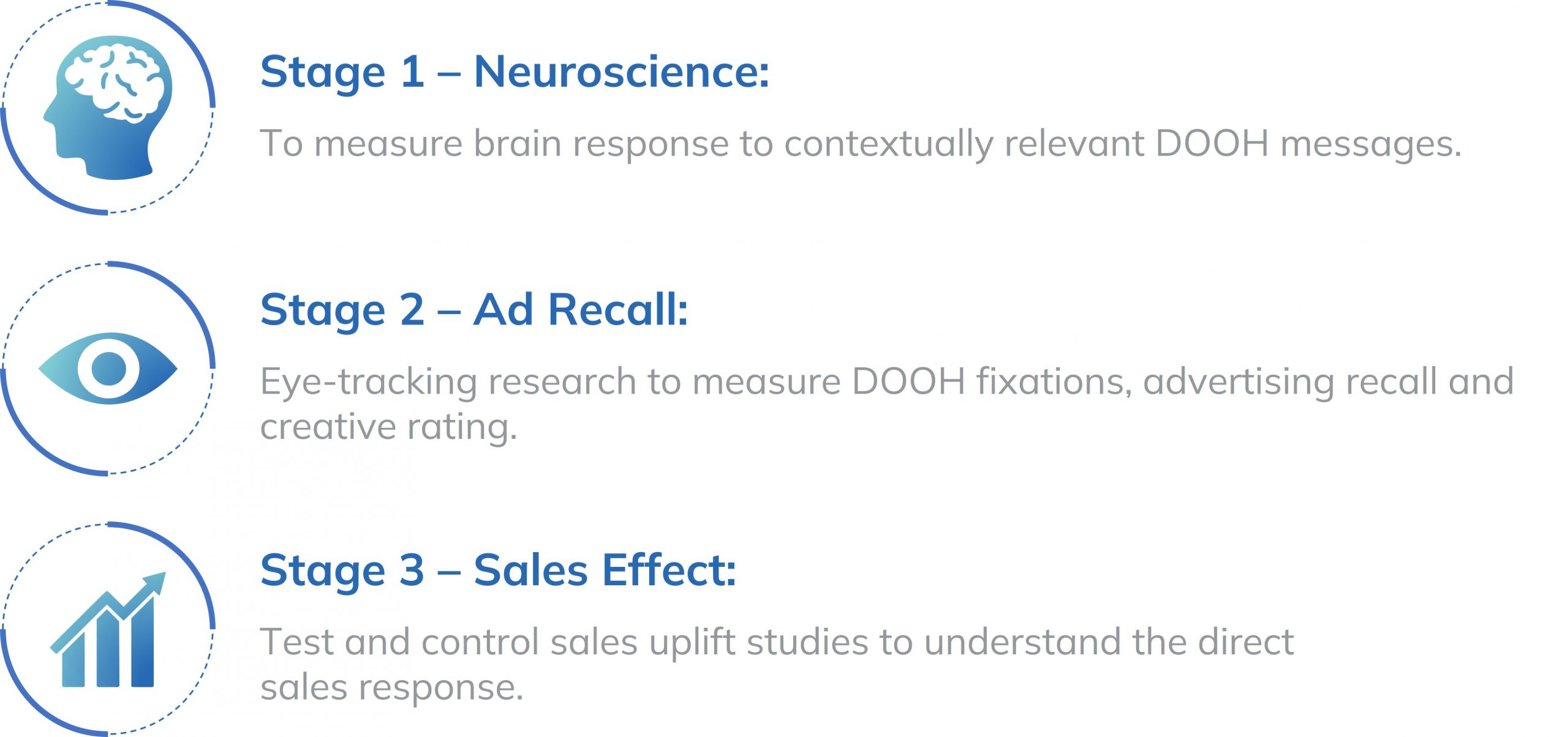
(Image source: clearchannel.be)
Brain Response
The first stage of the study was conducted to understand the neurological impact of:
- Relevant moments:Seeing DOOH ads at relevant moments
- Relevant content: Seeing DOOH ads that have an explicit call out to relevant content, i.e., the weather, location, time of day, or a live update
The topline results were as follows:

(Image source: clearchannel.be)
Separately, relevant moments and relevant content deliver a +12% and +18% increase in brain response respectively. However, the most significant effect was observed when consumers saw relevant content at the relevant moment – which increased average brain response by +32%.
Shazia Ginai, CEO of Neuro-Insight, comments on the findings: “Our brains aren’t interested in brands, what they’re interested in is narrative and puzzles. Narrative is another key driver of memory response as it helps us to make sense of the world. By showing moment and situationally relevant content, you’re weaving brands into the viewer’s narrative and therefore giving it the best chance of driving future behavior.”
Understanding what interests your audience and engaging them with relevant brand messages, or ‘narratives’, is an excellent path to maximise the effectiveness of your DOOH creative.
Ad Recall
The second stage of the study sought to identify the impact of contextual advertising on ad recall. It involved using eye tracking software amongst nearly 300 participants, half of whom saw a contextual ad featuring relevant content at a relevant moment, while the other half saw a control ad without this relevancy.
In line with what was discovered in the neuroscience research, it was found that consumers who saw a contextually relevant DOOH ad displayed an increase in ad attention, spontaneous ad recall and creative ratings when compared to non-relevant DOOH advertising.
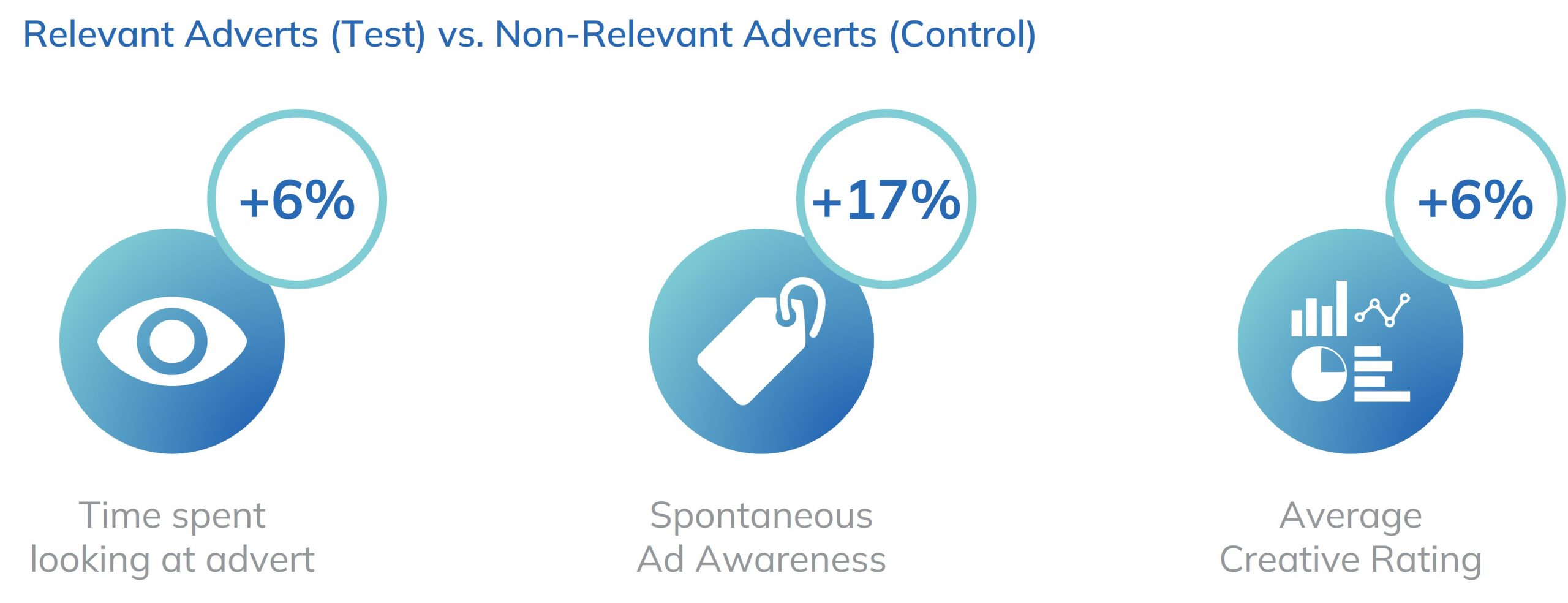
(Image source: clearchannel.com)
Sales Effect
The final stage of the research was designed to understand whether contextual advertising had a real-world effect – that is, whether the application of contextually relevant DOOH messaging actually drives more sales.
This was conducted via the monitoring of the link between in-store sales and the use, or absence, of DOOH contextual advertising.
The results were as follows:
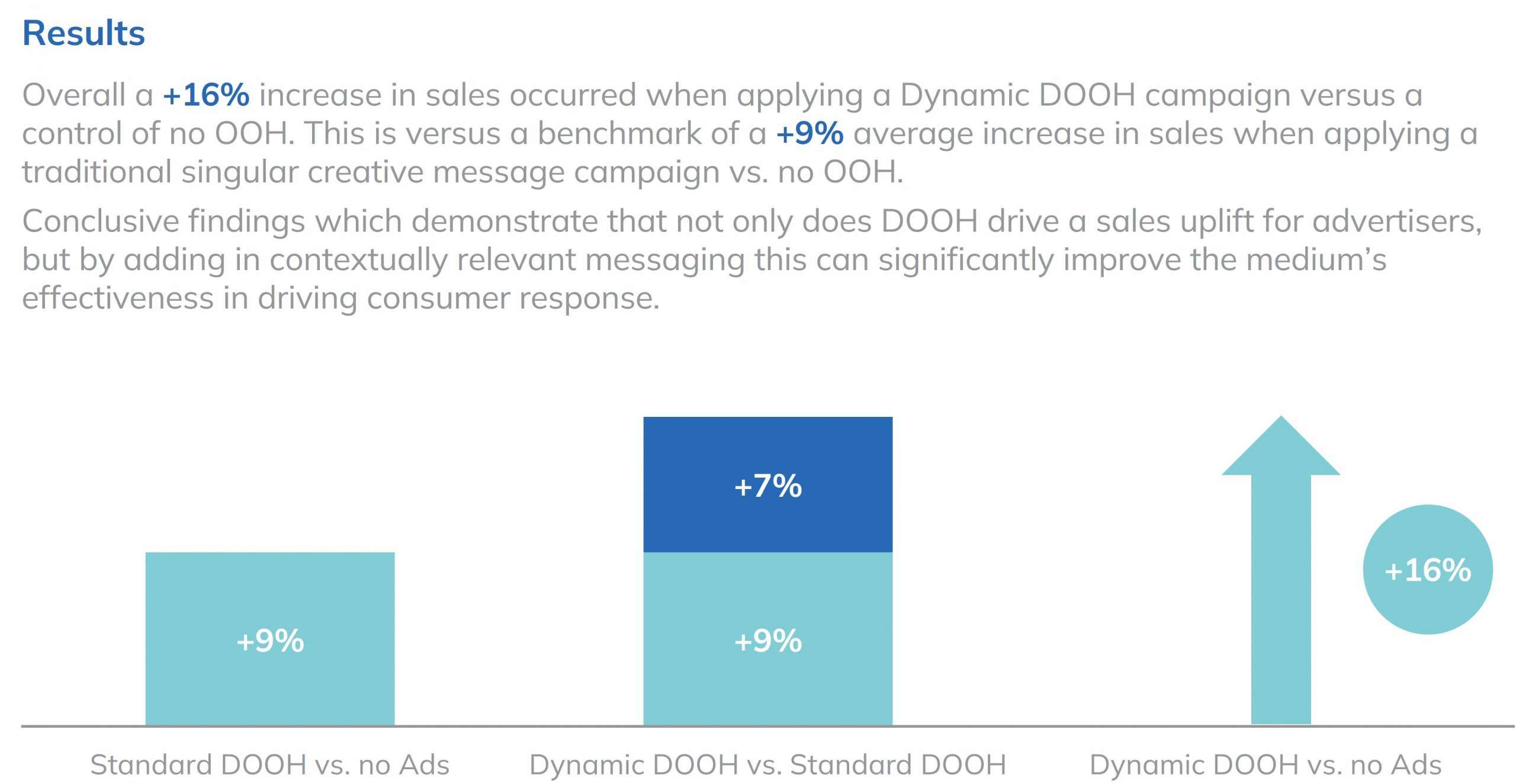
(Image source: clearchannel.be)
Get Started with DOOH Contextual Advertising with The Neuron
Ultimately, The Moment of Truth study concluded that the use of contextually relevant messaging in DOOH can lead to significant increases in the medium’s effectiveness by an average of 17%.
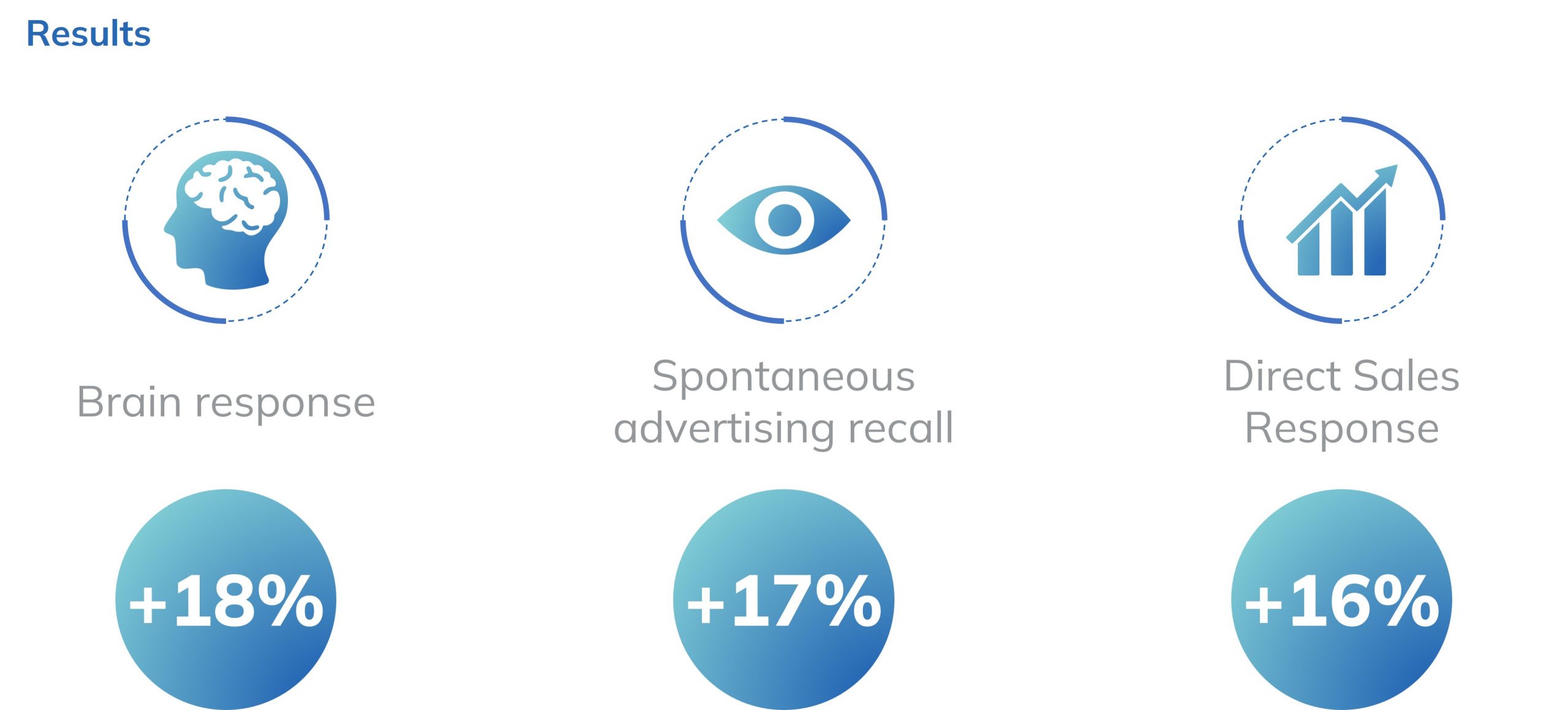
(Image source: clearchannel.be)
“Our brains are highly selective and will only process and encode information they deem important or relevant to that moment,” said Ginai. “Therefore, the more relevant the moment in which the content is consumed, the stronger the levels of processing will be. In addition, if content feels more congruent/less jarring, the emotional response will also be higher – indicating a more positive future action.”
In order to take advantage of these findings and start running successful DOOH contextual advertising campaigns, you need a programmatic DOOH (pDOOH) platform that lets you run creative and dynamic campaigns that you can optimize in real time.
You need The Neuron – a demand side pDOOH solution that enables advertisers to hand select the most relevant DOOH screens on which to run their ads.
With The Neuron, you can set conditions to update your ad campaign in real-time based on real-world context, such as time of day, day of week, weather conditions, demographics, footfall, live events, and much more.
Read more: Programmatic DOOH: Why It’s a Game Changer

